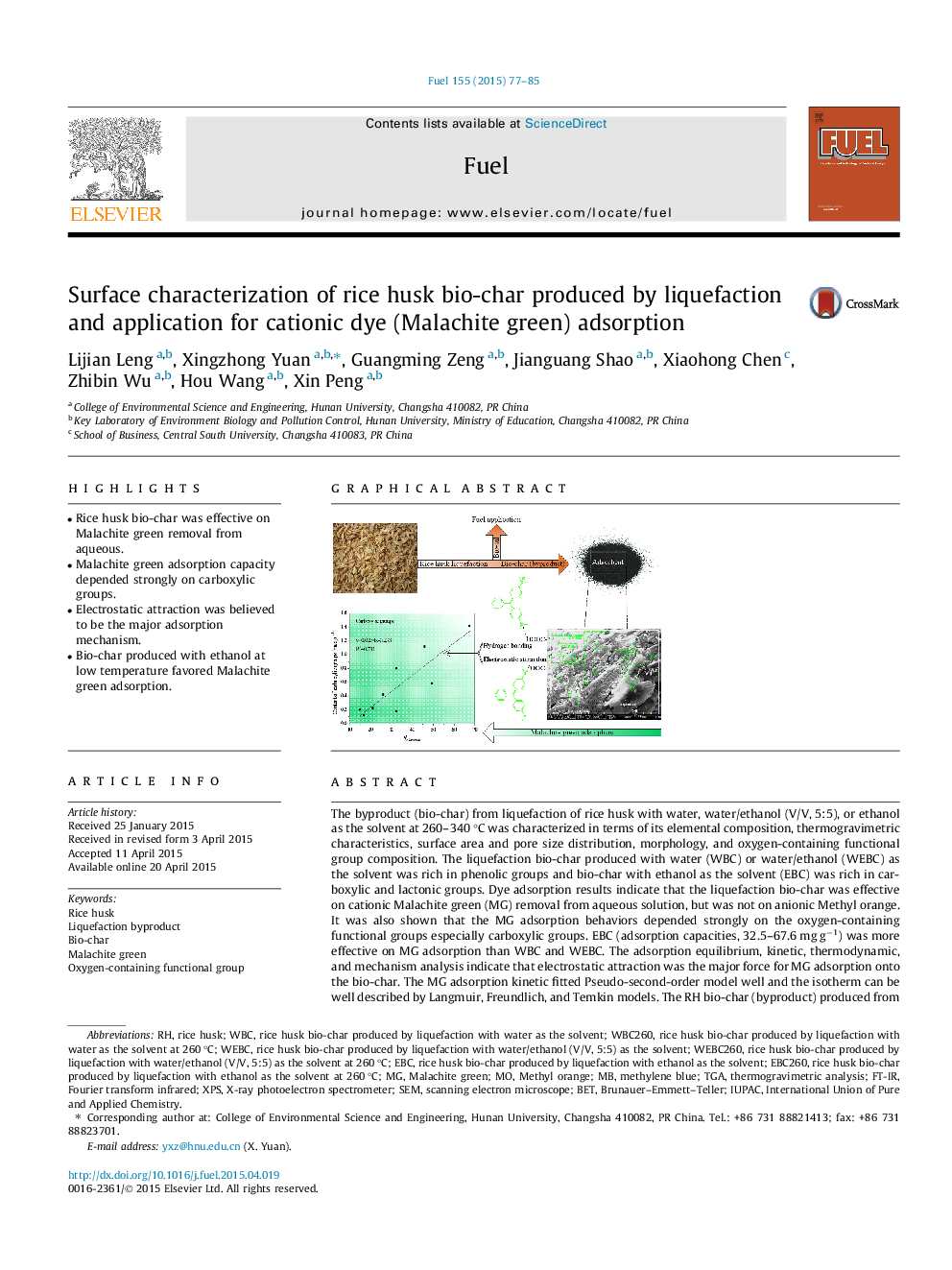| Article ID | Journal | Published Year | Pages | File Type |
|---|---|---|---|---|
| 205601 | Fuel | 2015 | 9 Pages |
•Rice husk bio-char was effective on Malachite green removal from aqueous.•Malachite green adsorption capacity depended strongly on carboxylic groups.•Electrostatic attraction was believed to be the major adsorption mechanism.•Bio-char produced with ethanol at low temperature favored Malachite green adsorption.
The byproduct (bio-char) from liquefaction of rice husk with water, water/ethanol (V/V, 5:5), or ethanol as the solvent at 260–340 °C was characterized in terms of its elemental composition, thermogravimetric characteristics, surface area and pore size distribution, morphology, and oxygen-containing functional group composition. The liquefaction bio-char produced with water (WBC) or water/ethanol (WEBC) as the solvent was rich in phenolic groups and bio-char with ethanol as the solvent (EBC) was rich in carboxylic and lactonic groups. Dye adsorption results indicate that the liquefaction bio-char was effective on cationic Malachite green (MG) removal from aqueous solution, but was not on anionic Methyl orange. It was also shown that the MG adsorption behaviors depended strongly on the oxygen-containing functional groups especially carboxylic groups. EBC (adsorption capacities, 32.5–67.6 mg g−1) was more effective on MG adsorption than WBC and WEBC. The adsorption equilibrium, kinetic, thermodynamic, and mechanism analysis indicate that electrostatic attraction was the major force for MG adsorption onto the bio-char. The MG adsorption kinetic fitted Pseudo-second-order model well and the isotherm can be well described by Langmuir, Freundlich, and Temkin models. The RH bio-char (byproduct) produced from liquefaction could be served as potential low-cost adsorbent for cationic dye removal from aqueous solution.
Graphical abstractFigure optionsDownload full-size imageDownload as PowerPoint slide
